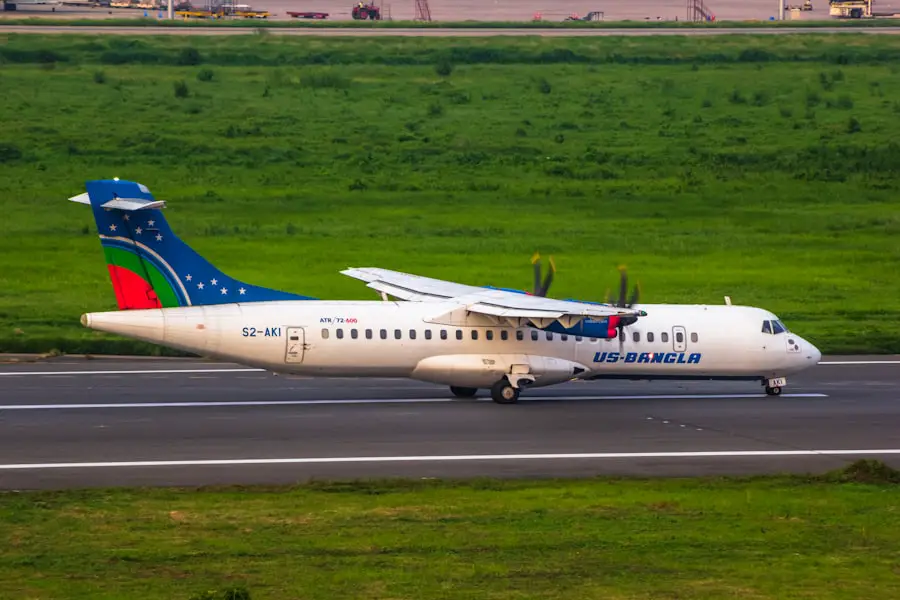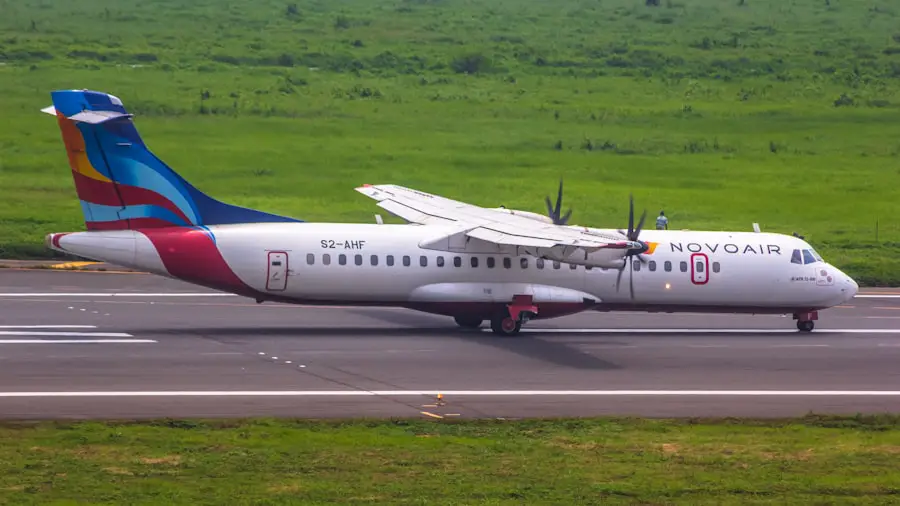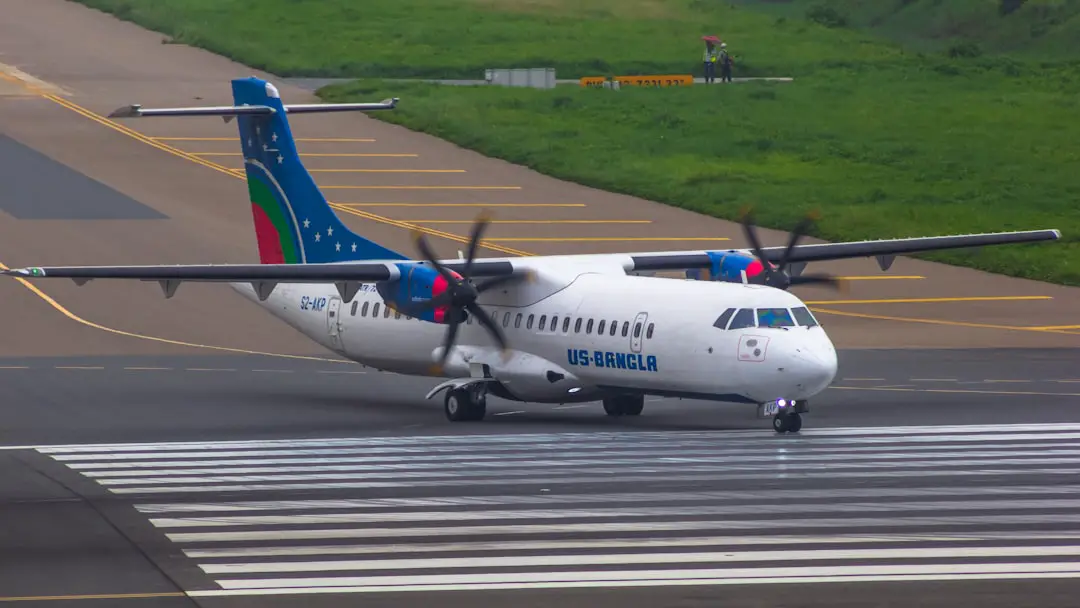Efficient boarding processes are crucial for airlines, as they directly impact the overall travel experience for passengers. A well-organized boarding procedure not only minimizes delays but also enhances customer satisfaction. When boarding is executed smoothly, it allows for timely departures, which is essential in maintaining flight schedules and optimizing aircraft utilization.
Delays during boarding can lead to a cascade of issues, including missed connections and increased operational costs. Therefore, airlines invest significant resources in refining their boarding strategies to ensure that passengers can embark and disembark with minimal hassle. Moreover, an efficient boarding process contributes to the safety and comfort of all passengers.
When boarding is chaotic, it can lead to overcrowding in aisles and at the gates, creating a stressful environment. This is particularly important in the context of health and safety, as close proximity can increase the risk of spreading illnesses. By implementing structured boarding groups and zones, airlines can manage passenger flow more effectively, allowing for a more orderly experience.
This not only enhances the overall atmosphere but also fosters a sense of security among travelers, knowing that their well-being is a priority.
Key Takeaways
- Efficient boarding processes are important for minimizing delays and ensuring a smooth travel experience for passengers.
- Alaska Airlines uses a boarding group system with priority given to elite status members, first class, and premium class passengers.
- Understanding the boarding zones and following instructions from airline staff can help passengers navigate the boarding process more effectively.
- Passengers with special needs are accommodated through pre-boarding and assistance from airline staff to ensure a comfortable boarding experience.
- Tips for a smooth boarding experience include arriving early, organizing belongings, and being aware of boarding group and zone assignments.
Alaska Airlines Boarding Groups and Priority
Alaska Airlines employs a systematic approach to boarding that categorizes passengers into distinct groups based on their ticket type and loyalty status. This method is designed to streamline the boarding process while ensuring that those who require additional assistance or have paid for premium services are accommodated first. The boarding groups typically include First Class passengers, Alaska Airlines MVPs (Most Valuable Players), and general economy class travelers.
By prioritizing these groups, Alaska Airlines aims to reduce congestion in the cabin and facilitate a smoother transition from the gate to the aircraft. The airline’s loyalty program plays a significant role in determining boarding priority. For instance, MVP Gold and MVP Gold 75K members enjoy earlier boarding privileges, allowing them to settle into their seats before the general boarding begins.
This not only rewards frequent flyers but also encourages travelers to remain loyal to the airline. Additionally, families traveling with young children are often allowed to board early, ensuring that they have ample time to stow their belongings and get settled without feeling rushed. This thoughtful approach to boarding reflects Alaska Airlines’ commitment to enhancing the passenger experience while maintaining operational efficiency.
Understanding the Boarding Zones

Alaska Airlines has implemented a zone-based boarding system that divides passengers into specific zones for a more organized boarding experience. Typically, there are zones numbered one through five, with Zone 1 being reserved for First Class passengers and elite members of the loyalty program. Subsequent zones accommodate different categories of travelers, including those seated in the rear of the aircraft and those with standard economy tickets.
This zoning system is designed to minimize congestion in the aisles and facilitate a more orderly boarding process. The rationale behind this approach is straightforward: by allowing passengers to board in smaller groups based on their seating location, Alaska Airlines can reduce the time it takes for everyone to get on board. For example, if passengers seated at the back of the plane board first, they can stow their luggage without having to navigate around those already seated in front of them.
This not only expedites the boarding process but also enhances passenger comfort by reducing the likelihood of delays caused by overcrowding in the aisles. Understanding these zones can help passengers plan their arrival at the gate accordingly, ensuring they are ready when their group is called.
Boarding Process for Passengers with Special Needs
| Category | Metrics |
|---|---|
| Boarding Time | Time taken for special needs passengers to board |
| Assistance Required | Percentage of special needs passengers requiring assistance |
| Boarding Equipment | Availability of ramps, lifts, and other boarding aids |
| Staff Training | Percentage of staff trained in assisting special needs passengers |
Alaska Airlines places a strong emphasis on accommodating passengers with special needs during the boarding process. Recognizing that individuals with disabilities or those requiring additional assistance may face unique challenges when traveling, the airline has established protocols to ensure a smooth experience for these travelers. Passengers who require special assistance are encouraged to notify the airline in advance, allowing staff to prepare accordingly and provide necessary support during boarding.
When it comes time to board, passengers with special needs are typically invited to board before general boarding begins. This early access allows them to navigate the aircraft at their own pace without feeling rushed or pressured by other passengers. Additionally, Alaska Airlines staff are trained to assist with mobility devices, ensuring that wheelchairs or other aids are safely stowed and retrieved as needed.
This commitment to inclusivity not only enhances the travel experience for individuals with disabilities but also reflects Alaska Airlines’ dedication to providing exceptional service to all passengers.
Tips for a Smooth Boarding Experience
To ensure a seamless boarding experience with Alaska Airlines, there are several tips that travelers can keep in mind. First and foremost, arriving at the gate early is crucial. Boarding typically begins 30 minutes before departure, so being present well ahead of time allows passengers to be prepared when their group is called.
This is especially important for those traveling with families or carrying multiple pieces of luggage, as it provides ample time to organize belongings and find seats without feeling rushed. Another helpful tip is to familiarize oneself with the boarding zones and groups prior to travel. Understanding where one fits within the boarding hierarchy can alleviate anxiety and help passengers plan accordingly.
For instance, if you know you are in Zone 3, you can take your time gathering your belongings without worrying about missing your turn. Additionally, keeping carry-on items organized and easily accessible can expedite the boarding process; this means ensuring that bags are packed efficiently and that any items needed during the flight are readily available.
Common Questions About Alaska Airlines Boarding

Many travelers have questions regarding Alaska Airlines’ boarding process, particularly those who may be flying with the airline for the first time. One common inquiry pertains to how early one should arrive at the gate before departure. Generally, it is advisable to be at the gate at least 30 minutes prior to departure; however, arriving even earlier can provide peace of mind and allow for any unexpected delays.
Another frequently asked question revolves around how carry-on luggage is handled during boarding. Alaska Airlines has specific guidelines regarding carry-on size and weight limits, which can vary depending on the type of aircraft being used. Passengers are encouraged to check these guidelines before arriving at the airport to avoid any last-minute surprises at the gate.
Additionally, understanding how carry-on items should be stowed once on board can help facilitate a smoother boarding experience for everyone involved.
How Alaska Airlines Boarding Process Compares to Other Airlines
When comparing Alaska Airlines’ boarding process to that of other airlines, several key differences emerge. Many airlines utilize a similar zone-based system; however, Alaska Airlines distinguishes itself through its emphasis on customer service and loyalty rewards. For instance, while some airlines may prioritize first-class passengers exclusively during boarding, Alaska Airlines also considers its frequent flyers and loyalty program members in its priority system.
Furthermore, Alaska Airlines has been recognized for its efforts in creating an inclusive environment for all passengers, particularly those with special needs. While many airlines have made strides in this area, Alaska’s proactive approach—inviting passengers requiring assistance to board early—sets it apart from competitors who may not offer such tailored support. This focus on customer care not only enhances passenger satisfaction but also reinforces Alaska Airlines’ reputation as a traveler-friendly airline.
Improvements and Changes to Alaska Airlines Boarding Process
In recent years, Alaska Airlines has made several improvements to its boarding process based on passenger feedback and operational efficiency studies. One notable change has been the introduction of mobile notifications that inform passengers when their group is about to board. This feature allows travelers to remain comfortably seated until it is their turn, reducing congestion at the gate and enhancing overall passenger comfort.
Additionally, Alaska Airlines has invested in technology that streamlines check-in and boarding procedures through self-service kiosks and mobile apps. These advancements enable passengers to check in online, select seats, and even receive real-time updates about their flight status directly on their smartphones. By embracing technology in this way, Alaska Airlines not only improves operational efficiency but also enhances the overall travel experience for its customers.
In conclusion, Alaska Airlines continues to refine its boarding processes through thoughtful strategies aimed at improving efficiency and customer satisfaction. By prioritizing passenger needs—whether through loyalty programs or accommodations for special needs—Alaska Airlines demonstrates its commitment to providing an exceptional travel experience while maintaining operational excellence.
If you’re interested in learning more about efficient travel practices, you may want to check out this article on 5 Must-Have Packing Cubes for Your Spring 2025 Getaway. This article provides valuable tips on how to pack smart and stay organized while traveling. It’s a great resource for anyone looking to streamline their packing process and make the most of their luggage space.
FAQs
What is the boarding process for Alaska Airlines?
Alaska Airlines uses a zone-based boarding process, where passengers are assigned to specific boarding groups based on their ticket type, frequent flyer status, and other factors.
How many boarding zones does Alaska Airlines have?
Alaska Airlines typically has four boarding zones: First Class, Premium Class, Main Cabin, and the last zone for passengers with no assigned seats.
Do passengers with disabilities or special needs have priority boarding on Alaska Airlines?
Yes, passengers with disabilities or special needs, as well as unaccompanied minors, are given priority boarding on Alaska Airlines to ensure they have adequate time and assistance to board the aircraft.
Does Alaska Airlines offer early boarding for certain passengers?
Yes, Alaska Airlines offers early boarding for passengers with elite status in their Mileage Plan, as well as those traveling in First Class or Premium Class.
What is the boarding order for Alaska Airlines?
The boarding order for Alaska Airlines typically starts with First Class passengers, followed by Premium Class, Main Cabin, and then passengers without assigned seats. This order may vary slightly depending on the specific flight and airport.
